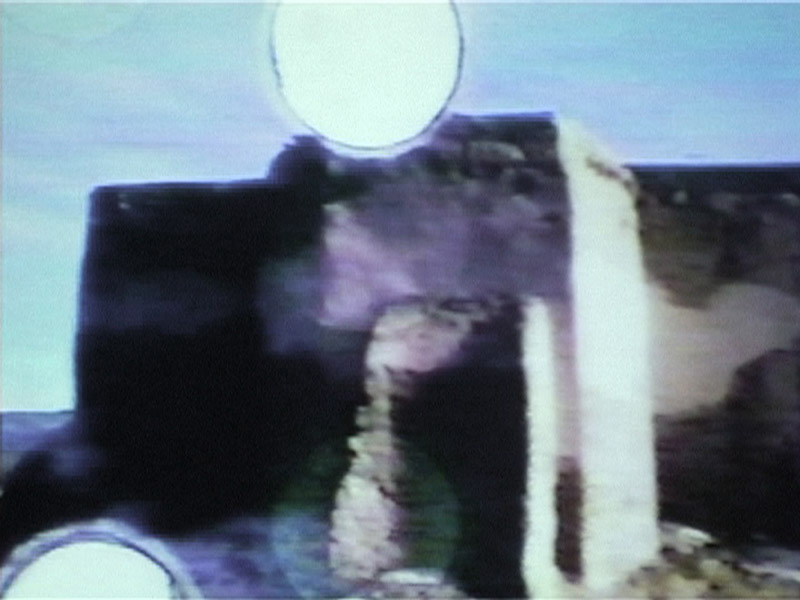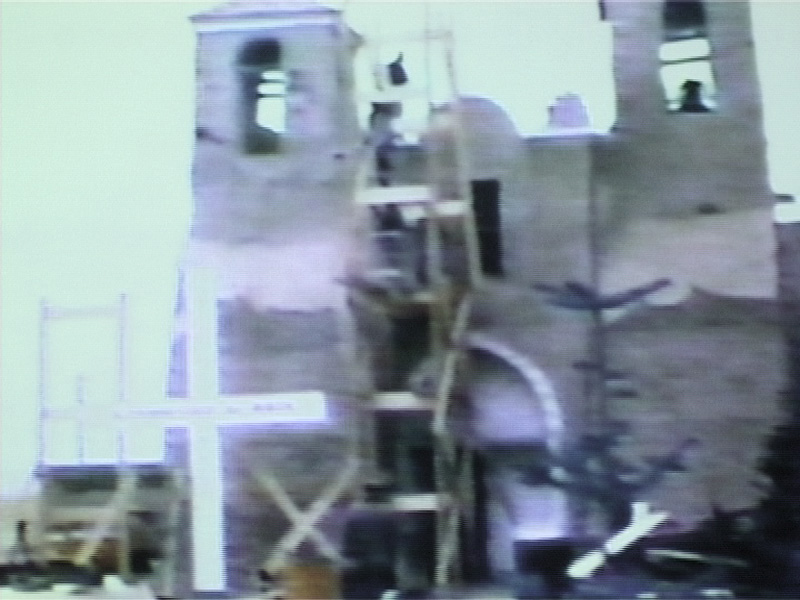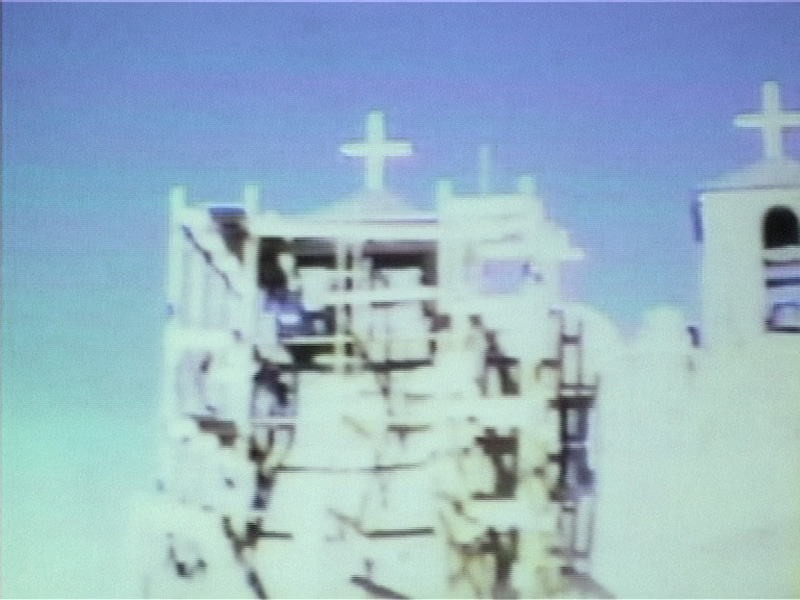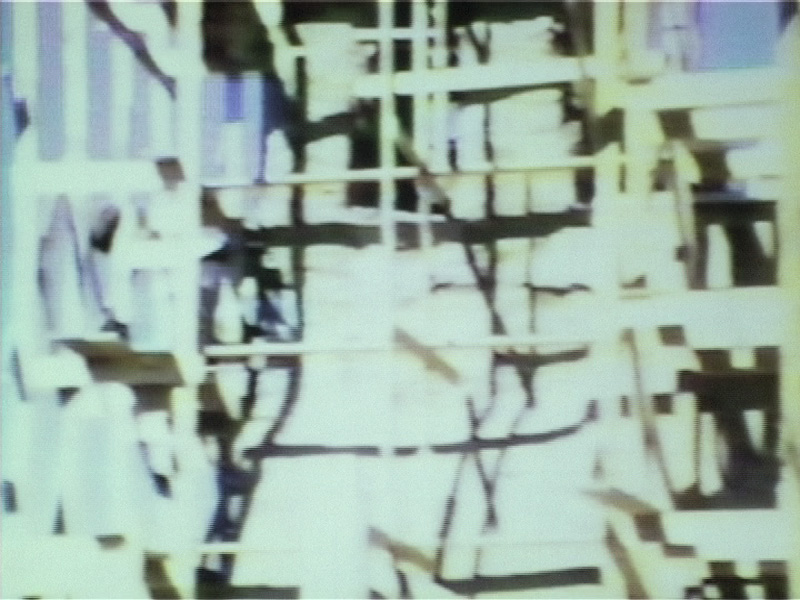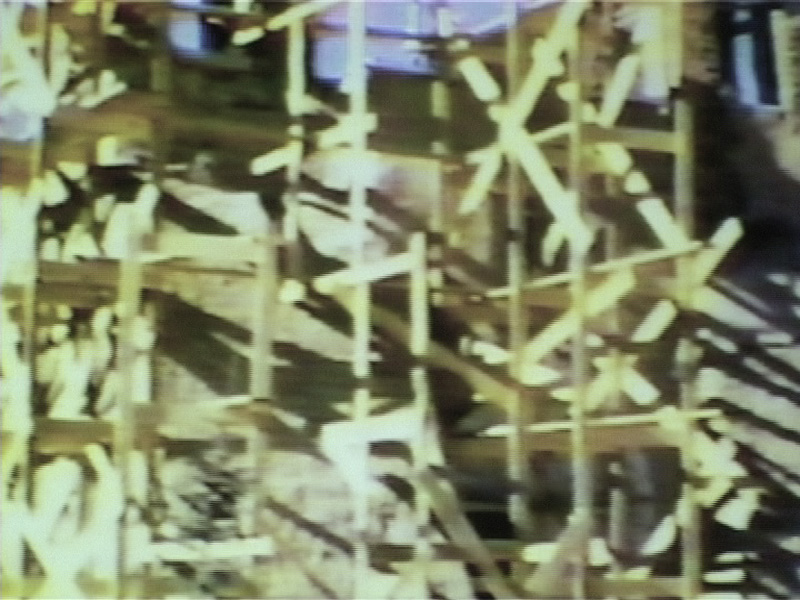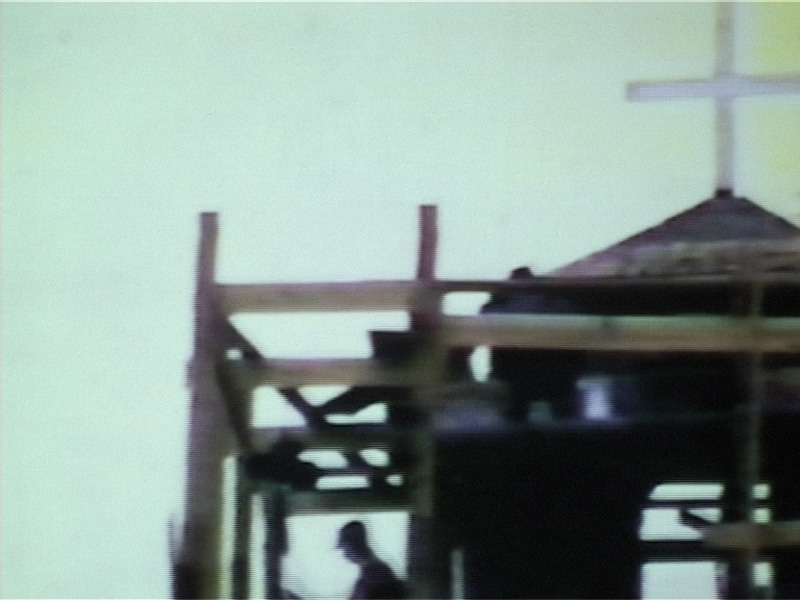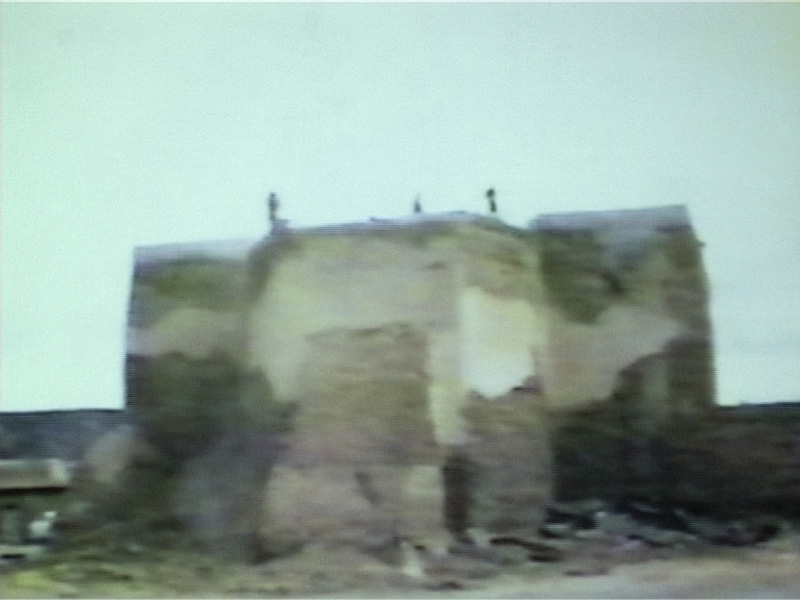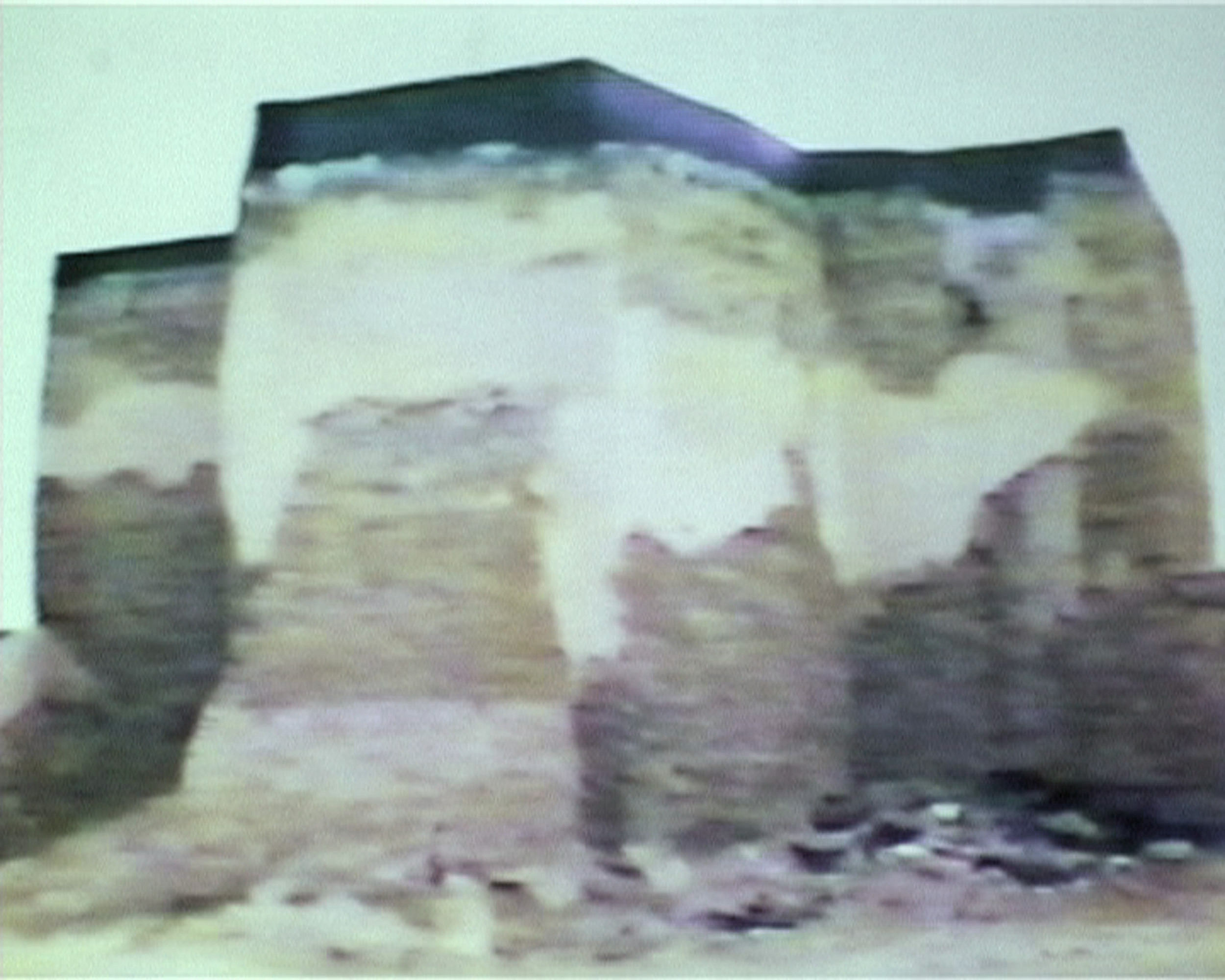Ronny Heiremans
- (model)Landscape
- (mute)
- (re)construction#01
- A city for all seasons
- Camera Obscura
- Display (Model)
- Fitting the Picture
- Handleiding (operating manual)
- Observatory
- passage
- Potential Estate
- Set
- Studio(Model)
- Study#01 (hands)
- Study#02 (drawing)
- study#03 (found footage)
- study#04 (blind)
- Temporary Display
- The Red Palace
- Wall Drawing
- Wall Drawing#01
- Wall Drawing#03
- When did you last move your furniture around?
- Writing a letter to Ian Wallace
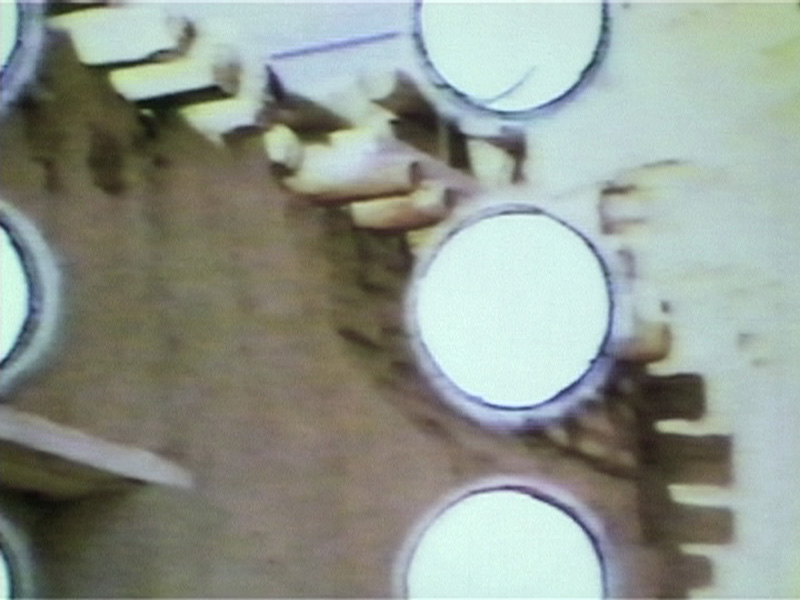
Walter Benjamin’s body of work often touches upon ideas of reuse, reproduction and authorship, which pertain to the appropriation of images. The dialectical image was Benjamin’s model for historiography in The Arcades Project. For him what an object from the past meant in the present was to turn that object into a text that has at its center an imagining subject who finds new possibilities for its meaning.
In my New Mexico research on adobe structures I came across an old VHS copy of an amateur Super8 recording of the restoration of the St.-Francis of Assisi Church in Ranchos de Taos. The unedited copy, including the light circles at the end of each role, shows the way the people of Ranchos remember this very dramatic period of their local history. The degeneration of the film adds to a certain nostalgic quality of the images. The process of filmic decay parallels the decay of the architectural mud structure they are laboring on in the Super8 images.
Study#03 of the New Mexican footage I recorded in for raises the questions on the way we remember things. Every new telling of a story perfects its narrative but also rearranges, edits and moves it further from its original, authentic plot. What do we remember? How do we remember and retell stories of the past? How do we project them into the future?
study#03 (found footage)
2006
Recorded in New Mexico, 2004
Video projection
1 DVD – color, no sound
Edition of 3
Produced by Ltd.Ed.vzw, 2006
